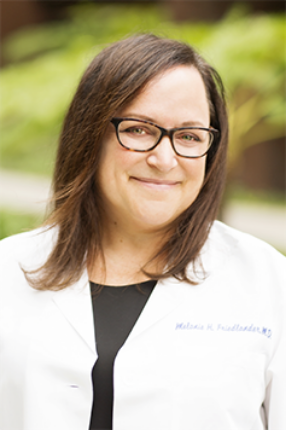Parathyroid Specialist
Parathyroid glands are tiny glands on the corners of the thyroid gland within the neck. The parathyroid glands help regulate calcium levels, which allow the nervous and muscular systems to function at their peak. When the parathyroid gland is diseased, the surgeons at Association of South Bay Surgeons are experienced, help with specialized surgery.
Parathyroid Q & A
The parathyroid glands are small round glands at the corners of the thyroid gland within the neck. People have 3-5 parathyroid glands, with 4 being the average number. Parathyroid glands create parathyroid hormone, which regulates calcium levels within the blood and bones. Additionally, the parathyroid glands aid in vitamin D production.
The main disease impacting the parathyroid glands is primary hyperparathyroidism, which happens if the glands produce excessive parathyroid hormone. The main cause of primary hyperparathyroidism is the growth of a benign tumor (a parathyroid adenoma) on a gland, which enlarges the gland.
Cancer can develop in the parathyroid glands. Parathyroid cancer is best treated surgically.
Secondary hyperparathyroidism is a fairly uncommon type of parathyroid disease, as it impacts primarily people with chronic kidney disease who are currently on dialysis. In this case, the parathyroid glands overproduce parathyroid hormone due to kidney failure, which caused the calcium in the blood to be out of balance.
Regardless of the type of parathyroid disease, high blood pressure and problems with concentration can be common. Many people with hyperparathyroidism are prone to chronic fatigue, headaches, depression, memory problems, and chronic aching bones. People with this condition may also be prone to developing gastric ulcers, pancreatitis, kidney stones, and osteoporosis.
When patients have high calcium levels, tests are done to find the abnormal gland. The Sestamibi scan uses IV injection of Tc99m MIBI and a specialized camera to highlight the parathyroid glands, which aids in identifying the adenoma in most cases.
Parathyroidectomy surgery is the most frequent and best way to deal with most of the diseases impacting the parathyroid glands. Tumors must be surgically excised. A neck exploration may be needed to locate the tumor so it can be removed. Parathyroidectomy is done while the patient is under general anesthesia. After the parathyroidectomy, the doctor may recommend that the patient takes a daily calcium supplement to maintain normal calcium levels.
Thyroid Specialist
The thyroid gland can develop a number of different diseases that cause serious symptoms, and surgical treatment is often the best solution. The Association of South Bay Surgeons are experienced, offers a variety of treatment options customized to the patient.
Thyroid Q & A
The thyroid gland is among the largest of the body’s endocrine system glands. This gland is located in the bottom part of the neck, just over the trachea. The thyroid gland’s main function is regulating metabolism.
The thyroid gland can have several different disorders and problems. Goiters cause major growth of the thyroid gland. They don’t always cause symptoms, but can cause throat issues, if severe. Thyroid cancer is one of the fairly common types of cancerous growths, but with treatment has a very good survival rate. Hyperthyroidism occurs when the body creates too much thyroid hormone, resulting in a too-high metabolism. Hypothyroidism is a common issue that occurs when the body doesn’t make enough thyroid hormone, causing a sluggish metabolism. Thyroid nodules are quite common, and most of them are benign. However, nodules may sometimes need to be biopsied if they appear malignant. They can be surgically removed if necessary. In thyroiditis, the thyroid gland is continually inflamed and may cause pain or other symptoms.
The surgery used for thyroid disease depends on the specific disease and on the anatomy of the gland. For example, if a nodule exists in just 1 lobe, the lobe itself can be removed. In cases where a large goiter compresses the trachea, a partial or total thyroidectomy removes the whole mass. In the case of thyroid gland cancer, a total (or near-total) thyroidectomy is typically the best surgical option. This surgery has the best chance of a complete removal of the cancer.
Recovery from thyroid surgery varies according to the specific operation. For most thyroid surgeries, patients expect to get back to their normal routine quite quickly. Even in a total thyroidectomy, most people resume regular routines within a week or so. However, major physical activity is usually restricted for about 2 weeks. If the entire thyroid gland was replaced, patients begin thyroid hormone replacement therapy to prevent their metabolism from slowing down too much.
Adrenal Specialist
The adrenal glands are responsible for producing important hormones, and when there are problems, it causes serious medical issues. The experienced team at the Association of South Bay Surgeons effectively deal with adrenal gland cancer and other issues. Call the offices to schedule a consultation today.
Adrenal Q & A
The adrenal glands, also called suprarenal glands, are endocrine glands located directly above the kidneys. These star-shaped glands consist of a cortex (the outer part) and a medulla (the inner part). The medulla creates the “fight or flight” hormones — epinephrine and norepinephrine. The adrenal cortex creates the hormones needed for proper fluid and electrolyte balance, including cortisone and aldosterone.
Tumors are the most common problems with the adrenal glands. Tumors may be either benign or malignant, but both types of tumors generally need to be treated. Adrenal tumors can cause symptoms including heart palpitations, high blood pressure, pain in the abdomen and flank areas, sudden changes in weight, stretch marks, and many other symptoms. However, some people who have adrenal gland tumors don’t experience any symptoms at all.
Radiological tests including CT scans or MRIs are the most common ways to diagnosed adrenal gland tumors. Blood tests also check the quantity of adrenal hormones present in the circulatory system.
There are several situations in which surgical removal of the adrenal gland may be recommended. For instance, if the tumors cause hormone overproduction, if the tumors consistently make too much adrenaline, or if the tumors is solid and bigger than 4 cm in size, the doctors at Association of South Bay Surgeons usually recommend surgical removal. In the case of adrenal gland cancer, prompt removal of the entire gland is typically the best treatment. If the patient has an adrenal mass of any size that is causing symptoms like chronic pain, surgical removal of the gland may be best.
Recovery varies based on the surgical approach. Open adrenal gland surgery is more complex and requires a longer recovery. This surgery may be preferred in cases where there is a very significant adrenal gland tumor or when cancer is advanced. Patients usually stay in the hospital for 5-10 days after this type of surgery, and recover over a period of 4-6 weeks at home. Laparoscopic adrenal gland surgery is preferred in most cases, as it allows for shorter and easier recovery. Most patients leave the hospital after just a day, and recover over 2-4 weeks.
Specialists

Catherine A. Madorin
MD, FACS
Endocrine & General Surgery

Melanie H. Friedlander
MD, FACS
Breast & General Surgery & Minimally Invasive Surgery

